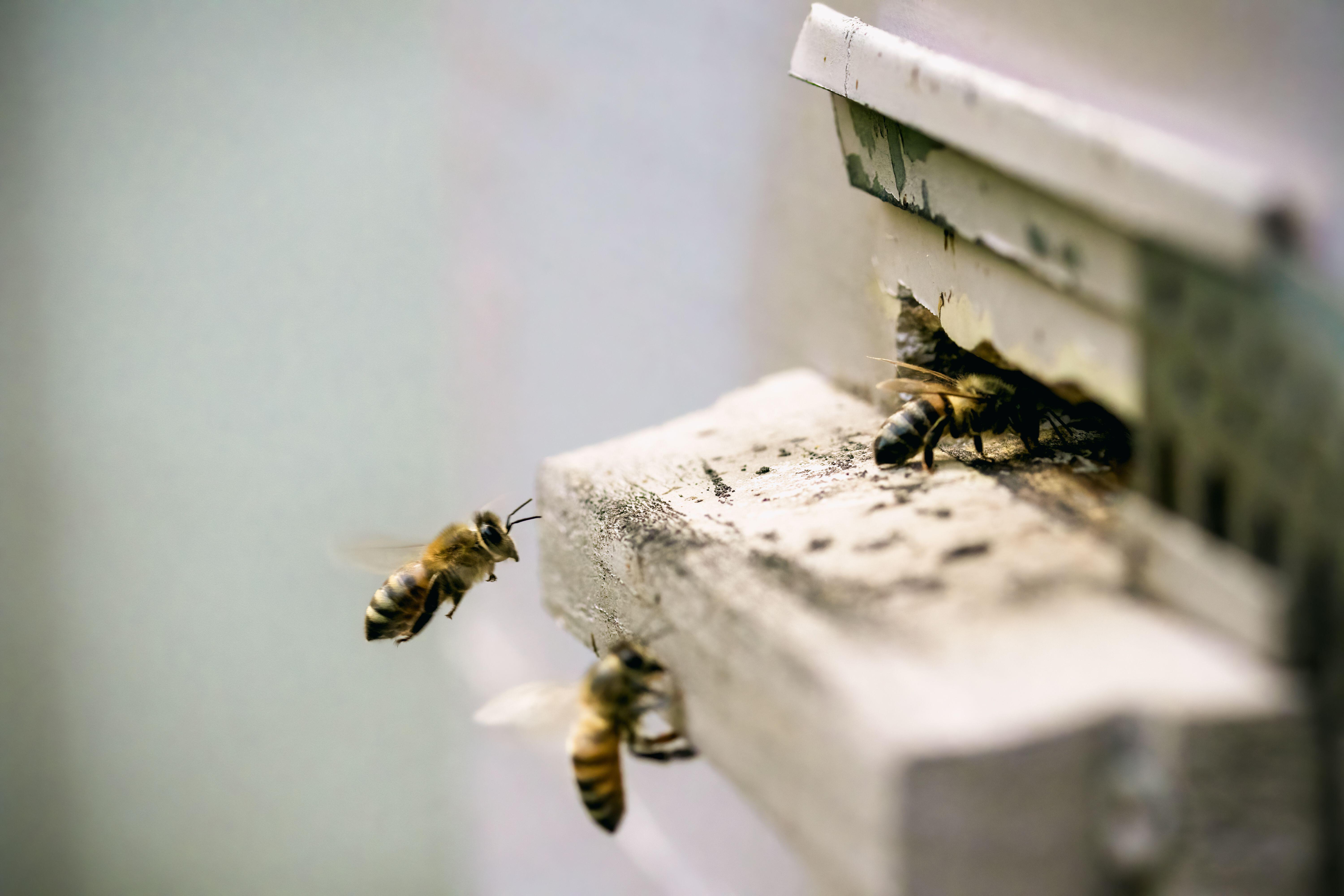Scientists identify sound of hovering invasive hornets in move to protect honeybees
The Asian hornet is a voracious predator of native honeybees.

Scientists have found ways to remotely detect the sound of invasive Asian hornets hovering outside beehives in a move that could protect honeybees.
The Asian or yellow-legged hornet is a non-native predator that feeds on honeybees, hovering around the entrance of a hive for long periods until a bee is caught and eaten.
The presence of the hornet, which can kill 50 bees a day, also puts stress on the honeybees which leave the hive less to forage, reducing their food stores for winter and threatening the colony’s survival.
But now scientists from Nottingham Trent University have identified and differentiated Asian hornet hovering flight sounds, using inexpensive microphones and an algorithm trained to discriminate between the flight of the predators, honeybee sounds and general background noise.
They also found the hornets reliably produced these sounds as they tend to hover continuously, while honeybees hover for much shorter periods as they are mostly flying straight in and out of the hives.
It is hoped the system could be left in apiaries to continuously distinguish between Asian hornets and honeybee flight sounds.
This could allow beekeepers to be immediately alerted to the presence of even just one hornet using their smartphone, so they can take swift action to tackle the threat before too much stress is caused to their bees, the researchers said.

The researchers, working with scientists from the University of Coimbra in Portugal and Ghent University in Belgium, were able to detect the presence of Asian hornets at an apiary at the University of Coimbra with almost 100% accuracy over three seasons.
The Asian hornet is native to South East Asia and arrived in France in a cargo of pottery from China about 20 years ago, spreading rapidly across the continent, and devastating colonies in France and Italy.
It was first seen in the UK in 2016, and there have been regular sightings since, including 44 confirmed in 2024 – largely in Kent and East Sussex, although a rapid response approach to destroy hornets and nests has stopped its spread in Britain.
Lead researcher Dr Harriet Hall said: “Invasive species such as the Asian hornet are a serious threat to biodiversity.
“Our native honeybee hasn’t evolved alongside this predator and because of this its defences against the hornet are low.
“Identifying Asian hornet presence at apiaries early on would be highly beneficial for beekeepers who could then take immediate action.”
She said being able to discriminate between Asian hornet and honeybee sounds provided “excellent potential” for a remote alert system for hornets.
Dr Martin Bencsik, a physicist at Nottingham Trent University, added: “Asian hornets are a significant threat to European honeybees and we need to find new ways to identify their presence quickly.
“In spite of overlapping features of the sound spectra of honeybees and hornets, it is amazing to see that their hovering sound features are very different, and it is fortunate, for this detection technique, that hornets hover around hives far more than bees do.”
The study was published in the journal Computers and Electronics in Agriculture.





